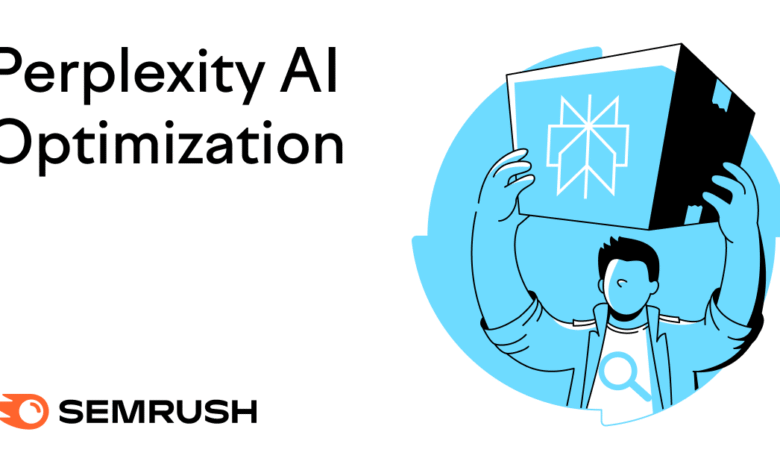5 Proven Ways to Optimize Content for Perplexity AI

▼ Summary
– Perplexity uses a three-layer reranking system that evaluates and refines search results based on quality benchmarks, potentially discarding low-quality content.
– Freshly published or updated content and user engagement with new content significantly influence Perplexity’s ranking and citation decisions.
– Content in high-value categories like AI, technology, and business receives more visibility, and including semantic keywords naturally helps match user queries.
– Referencing or being featured in content from Perplexity’s manually curated list of trusted domains can improve visibility and citation frequency.
– Building topical authority through comprehensive coverage and internal linking, along with compelling meta titles and descriptions, enhances long-term visibility and engagement.
Understanding how to optimize your content for Perplexity AI can significantly boost your chances of earning citations and driving traffic. Recent insights reveal that Perplexity employs a sophisticated ranking system, prioritizing freshness, user engagement, and authoritative sources. By aligning your content strategy with these factors, you can enhance visibility within this rapidly growing platform.
Perplexity utilizes a three-tier reranking mechanism for searches involving entities like people, organizations, or locations. This process begins with retrieving and scoring initial results, followed by a refinement layer that assesses quality. Content failing to meet specific benchmarks may be discarded entirely. Key ranking signals include a strong preference for recently published or updated material, domains vetted as authoritative, and patterns of user interaction. Unlike traditional search engines, Perplexity appears to weigh recency and engagement more heavily during source selection.
Imagine publishing a comprehensive article on electric vehicle battery innovations. If a user queries “latest EV battery breakthroughs,” Perplexity might retrieve your piece. However, if it lacks recent updates or has low early engagement, it could be excluded during reranking. To avoid this, consider the following strategies for content creation and optimization.
Select High-Impact Topics Focusing on subjects Perplexity favors can dramatically increase your visibility. Content in categories like business analytics, artificial intelligence, technology innovation, and scientific research receives exponentially more exposure than default topics. For instance, publishing commentary on AI applications within your industry or releasing original research reports can position your content for higher rankings.
Integrate Semantic Keywords Naturally Including semantically related terms helps Perplexity’s AI connect your content to user queries. An article about email marketing automation might incorporate phrases like drip campaigns, behavioral triggers, lead nurturing, and conversion funnels. Use tools to identify related keywords, then weave them naturally into your text. Avoid keyword stuffing; instead, write as an expert who effortlessly employs relevant terminology. Cover multiple subtopics, link to related concepts, and structure content to mirror how users phrase their questions.
Leverage Trusted Domains Perplexity maintains a manually curated list of reputable domains, and associating your content with these sources can improve rankings. While the full list isn’t public, you can identify favored domains by observing which sources Perplexity frequently cites in your niche. One effective approach is referencing these trusted sources within your articles. For example, in developer-focused content, link directly to GitHub repositories or include code snippets from respected open-source projects. For consumer tech reviews, cite Amazon product pages or Reddit discussions to substantiate your claims.
Craft Engaging Meta Titles and Descriptions Your title tag and meta description serve as the primary hooks within Perplexity’s citation snippets. Since early user engagement heavily influences ranking potential, these elements must compel clicks. Ensure your titles accurately reflect the content and incorporate primary keywords, while meta descriptions should offer a clear preview of what users will gain by visiting your page.
Establish Topical Authority Perplexity likely rewards websites that demonstrate comprehensive expertise on a subject. Instead of evaluating content in isolation, it considers how your articles interlink and collectively cover a topic. Build topical authority by creating topic clusters: a central pillar page addressing a broad theme, supported by cluster pages exploring specific angles, all connected through internal links. For example, a pillar page on large language models could link to subpages discussing ChatGPT, Google’s AI models, and Perplexity itself. This structure signals depth and reliability to the algorithm.
Monitor Performance and Refine Strategy Tracking how your content performs in Perplexity allows for continuous optimization. Use analytics tools to view your mention count compared to competitors and identify strategic opportunities for improvement. Apply these insights alongside the optimization tips outlined here, and regularly assess how your Perplexity visibility evolves over time.
(Source: Semrush)




